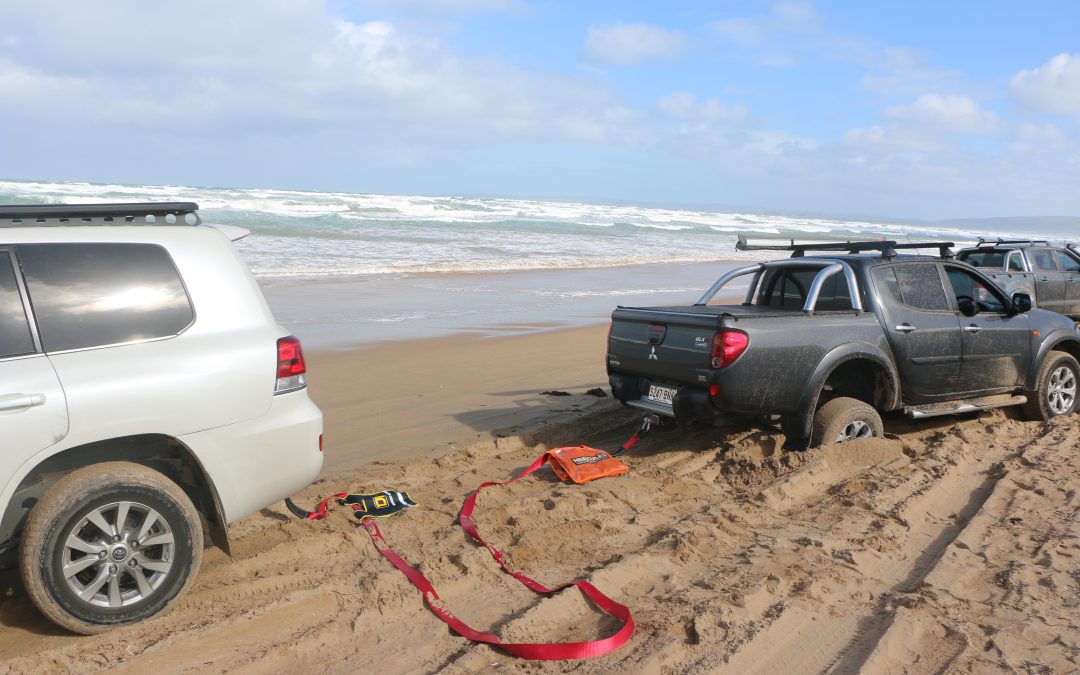Recovery dampers. What you should know.
So you are stuck in the sand or mud and someone wants to help. Before you roll out the recovery strap have a think about the danger you are about to expose everyone to. Firstly, have you considered a safer alternative to a snatch recovery? Have you tried rocking back and forward to compact the sand and make a track? Have you tried “working the wheel”? What about digging the sand from underneath the chassis rails? Have you adjusted the tyre pressures? Will a gentle tow with a tow rope or winch extension strap be enough?
Before you put 3 or more tonnes of shock load onto your vehicle you should consider what may go wrong and what the consequences may be. Prepare for every snatch recovery assuming a failure will occur and then you will be ready if it does occur.
Assuming you have checked that the recovery points, hitch receivers, recovery strap and bow shackles are up to the standard required, it is now time to prepare for the unexpected…a failure of the equipment. Slowing the progress of any recovery equipment when it fails under load is a combination of proven practices as well as common sense.
A recovery damper can be anything at hand, such as a heavy rug, a sturdy bag full of sand or a drag chain wrapped around the strap. The key ingredients are weight and common sense. The weight of the damper brings the strap, and any recovery point that may be attached, to the ground. This causes resistance, and therefore slows the slingshot effect of the recovery strap. Various weight is quoted by the experts, ranging from 3 to 5kg. A 5 metre drag chain weights about 5 kg. A steel snatch block placed inside the pocket of the recovery damper is over 3 kg.
In all of our training we use a minimum of 3 kg and apply weight to both ends of the recovery strap.
Mad Matt has put together a very informative video which demonstrates the importance of recovery dampers. It is a video that every 4WDer should see. I should note that some people use the term “Air Damper”. This is misleading. Recovery dampers are constructed with a pocket which is designed to carrying some weight, like sand or rocks. Some believe that the resistance caused by the movement of the unweighted damper through the air is all that is needed. This video disproves that myth.





Recent Comments